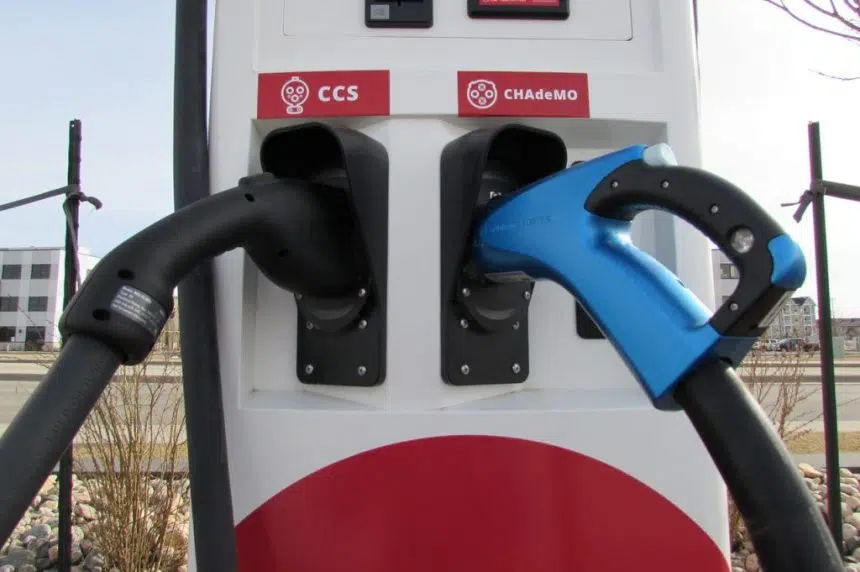A vehicle dealership owner says he wants to get more electric cars on his lot, but some factors are working against him.
Vaughn Wyant is the president and CEO of the Wyant Group, which has multiple locations in Saskatchewan, Alberta and British Columbia.
He said there are two things dealers look at when it comes to stocking vehicles: Availability from the manufacturer and market demand.
“In Saskatchewan, we are seeing more and more interest in battery electric vehicles, but it’s not a huge demand yet because there’s a lot of range anxiety — how a battery in an electric vehicle reacts to extremely low temperatures,” Wyant said.
“When you get into places like Kelowna and Vancouver, the range is not a big issue, so they sell more so they are allocated more. The thought that dealers in Saskatchewan don’t want to stock or sell electric vehicles is not true.
“There’s a worldwide shortage of semi-conductors … A battery electric vehicle will take upwards of 3,000 semi-conductors where regular internal combustion engines will take 50 to 100 to 150.”
But that demand is on the rise.
“People that I would never have thought would inquire about them are very interested. For openers, electric vehicles are fun to drive,” Wyant said. “They are quick, they are quiet, they are very interesting and there are some phenomenal cars that are being built by some great manufacturers and the choice is getting larger all the time.”
He said one of the newest vehicles — the Ford F-150 Lightning — has a lot of people lining up to get it.
“In that case, we will stock as many as we can get but the reality is they will be sold before they get in,” Wyant said.
Wyant said dealerships spend hundreds of thousands of dollars on training, specialized equipment and chargers to deal with electric vehicles.
“We know the future of transportation and know the whole car business is going to shift to electric vehicles and it’s going to do so at the rate chargers are installed,” he said.
“The length of time to charge your car is improved, the range of the car is improved and how they react to extremely cold weather is going to depend on how a consumer makes a decision to jump from an internal combustion engine to a battery electric one.
“We know it’s coming, we’re ready to sell them and we can get them in the quantities that the market demands at this point in time.”
The federal government is looking to make that transition happen quickly, with new funding for charging stations and a goal to have one in five new vehicles be electric by 2026. It will look to increase that to at least 60 per cent by 2030 and 100 per cent by 2035.
“There has to be affordability to start with (to reach those goals). Electric vehicles are not inexpensive to build, they are very expensive to build and we still don’t have a large model mix of vehicles that would fit into most families’ budgets,” Wyant said.
“If we want to sell more electric vehicles, they have to become more affordable. Should they become more affordable on the back of government money, which is really public funding? I would leave that up to the public to decide.”
Wyant said he thinks there’s a rush to get to those goals.
“One in five by 2026 is probably quite possible in some markets but I don’t think it’s remotely possible in places like Alberta, Saskatchewan and Manitoba – the cold climates,” he said. “I just don’t think we will have the appetite, the range, the charging ability (or) the total infrastructure to do that. I don’t think we will be able to get there.
“I’m not against it. I’m very skeptical that we could do it in that time frame. If we can get there by 2026, I think that it’s great. I don’t think the world will be able to supply near enough electric cars to suit that kind of demand in that kind of time.”











